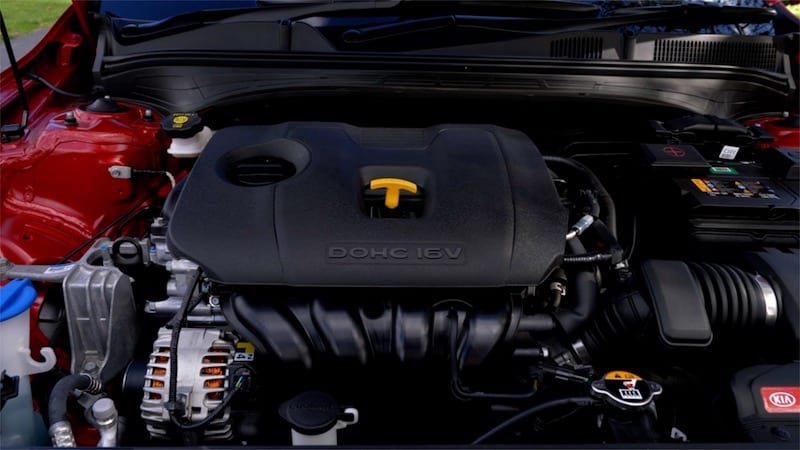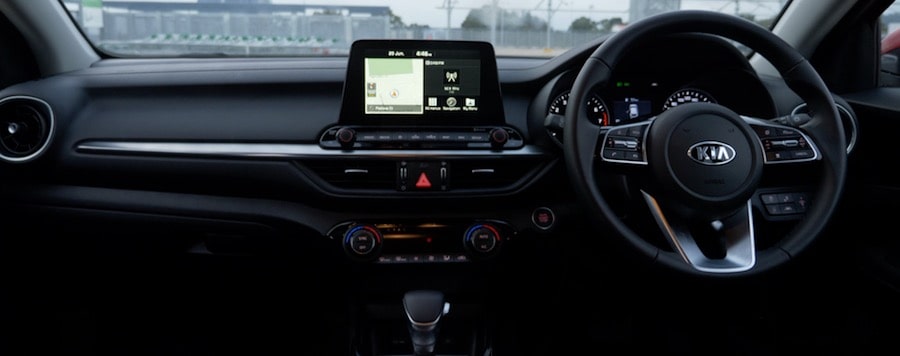REGULAR ENGINE (2.0L MPI)
Engine type: 2.0 L in-line 4 cylinder petrol
Maximum power: 112 kW @ 6,200 rpm
Maximum torque: 192 Nm @ 4,000rpm
Fuel tank capacity: 50 litres
Average consumption: 7.4 L /100km)
Drivetrain: FWD
Kerb weight: 1,320 kg
GT ENGINE (1.6T Petrol)
Engine type: 1.6 L Turbo Petrol DCT
Maximum power: 150 kW @ 6,000 rpm
Maximum torque: 265 Nm @ 1,500rpm
Fuel tank capacity: 50 litres
Average consumption: 6.8 L /100km)
Drivetrain: FWD
Kerb weight: 1,395 kg
The Cerato we reviewed has a 2 litre with 112 kW of power and 192 Nm of torque from 4,000 rpm and it is paired with a 6-speed automatic. The Kia Cerato GT has a smaller 1.6 litre turbo engine. But actually improves on the regular 2 litre engine in most areas including performance and fuel consumption.

The Drive
So, despite the Sport+ moniker, this is not a sporty car. What it is is sufficient. Acceleration is uninspiring, but good enough to get you up to speed in the city or on the motorway without any fuss. Top speed is unknown to me and, frankly, who cares, but cruising at the speed limit is effortless and this is the most anyone who buys the Cerato with this engine will ask for.
All that for the BASE MODEL which is impressive!
The Sport+ in Amelias review adds autodimming rearview mirror, blind spot detection, rear cross traffic alert and pedestrian and cyclist avoidance.

Kia’s new Cerato looks fantastic, is that good generally and we have the new turbo engine to fix that one major complaint, could the GT be a perfect choice? We’ll find out in the next review.






